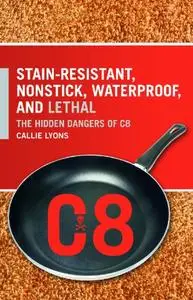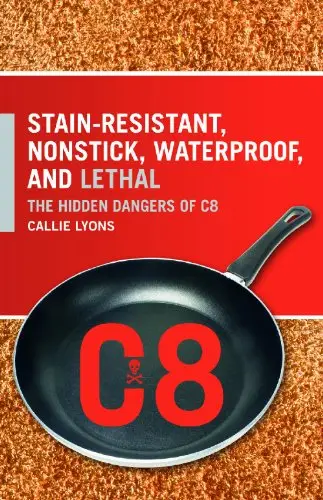Stain-Resistant, Nonstick, Waterproof, and Lethal: The Hidden Dangers of C8 by Callie Lyons
English | 2007 | ISBN: 027599452X | 208 pages | PDF | 1,3 MB
English | 2007 | ISBN: 027599452X | 208 pages | PDF | 1,3 MB
It's everywhere. It's toxic. And it lasts forever. Asbestos? Nuclear waste? No. This statement, made by the Environmental Protection Agency in 2003, refers to a little-known but ubiquitous chemical compound whose trade name is C8. Manufactured by DuPont, it is used in the making of a plethora of stain-resistant consumer products, including microwave popcorn bags, food packaging, nail polish, car finishes, pizza boxes, and many other common items. Recently named a likely carcinogen by the EPA, C8 has been linked to cancer, reproductive disorders, birth defects, and respiratory problems.The first members of the public to hear about C8, in 2002, were the residents of the Mid-Ohio Valley, whose water supplies were found to contain detectable amounts as the result of emissions from the DuPont Washington Works Plant near Parkersburg, West Virginia. As a result, in 2003 the EPA announced it was launching a multi-agency review of the manmade chemical, which became the largest investigation of its kind. The EPA was concerned because early tests indicated that C8 could already—and unexpectedly—be found in the blood of 96 percent of Americans. In 2005 DuPont settled a class action lawsuit with Valley water consumers for more than $200 million, and the EPA has called for a global phase-out of C8 involving eight companies.
As a local journalist, Lyons has covered the C8 issue from the beginning. Here she tells the story of how the danger of C8 first came to light when a West Virginia family lost an entire herd of 280 cattle to a mysterious wasting disease within a mere decade, following forty years of successful farming. The die-off began in the mid-1980s, after the family sold some land to DuPont. The chemical company used the property as a landfill, dumping C8, which made its way into the public water supply. By the time the EPA investigated the situation, the same substance detected in the water in West Virginia and Ohio—which has by now spread to a total of twelve states and counting—could also be found leeching off of thousands of consumer products and into the bloodstreams of millions of people around the world.



